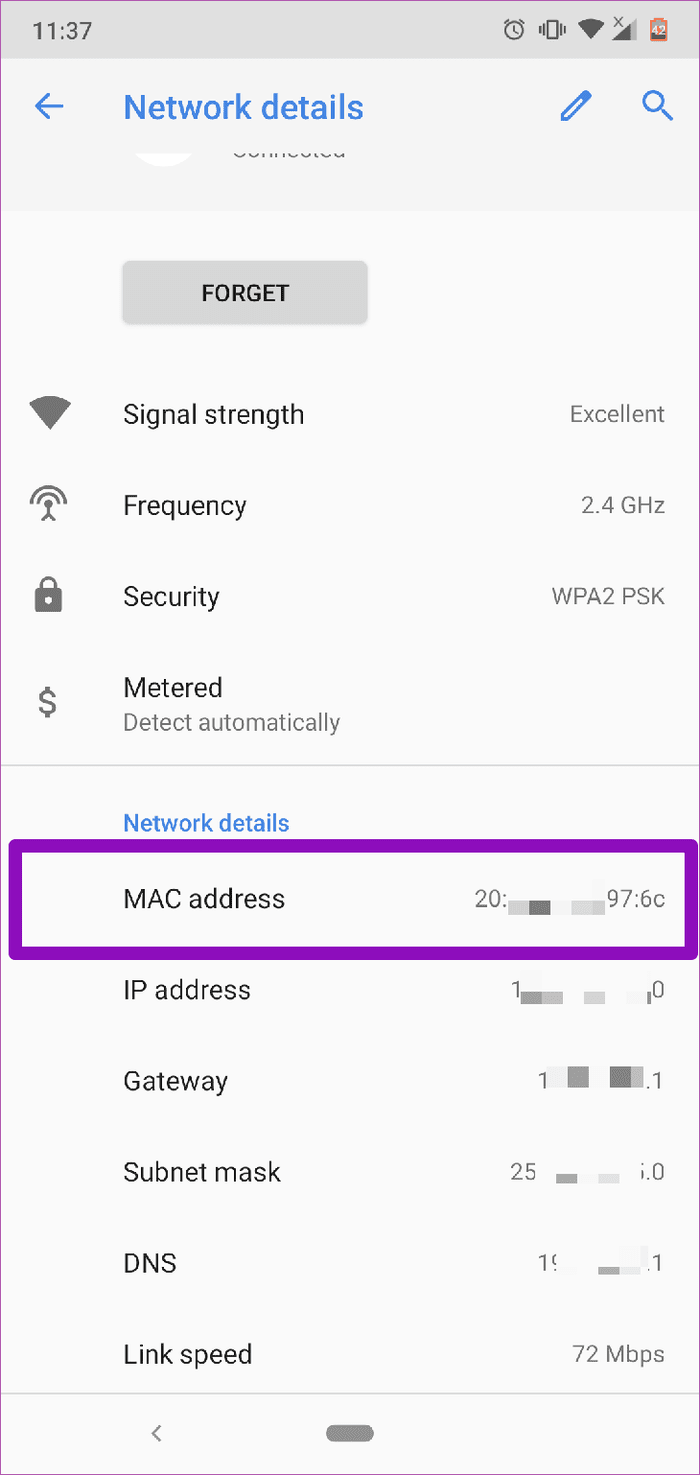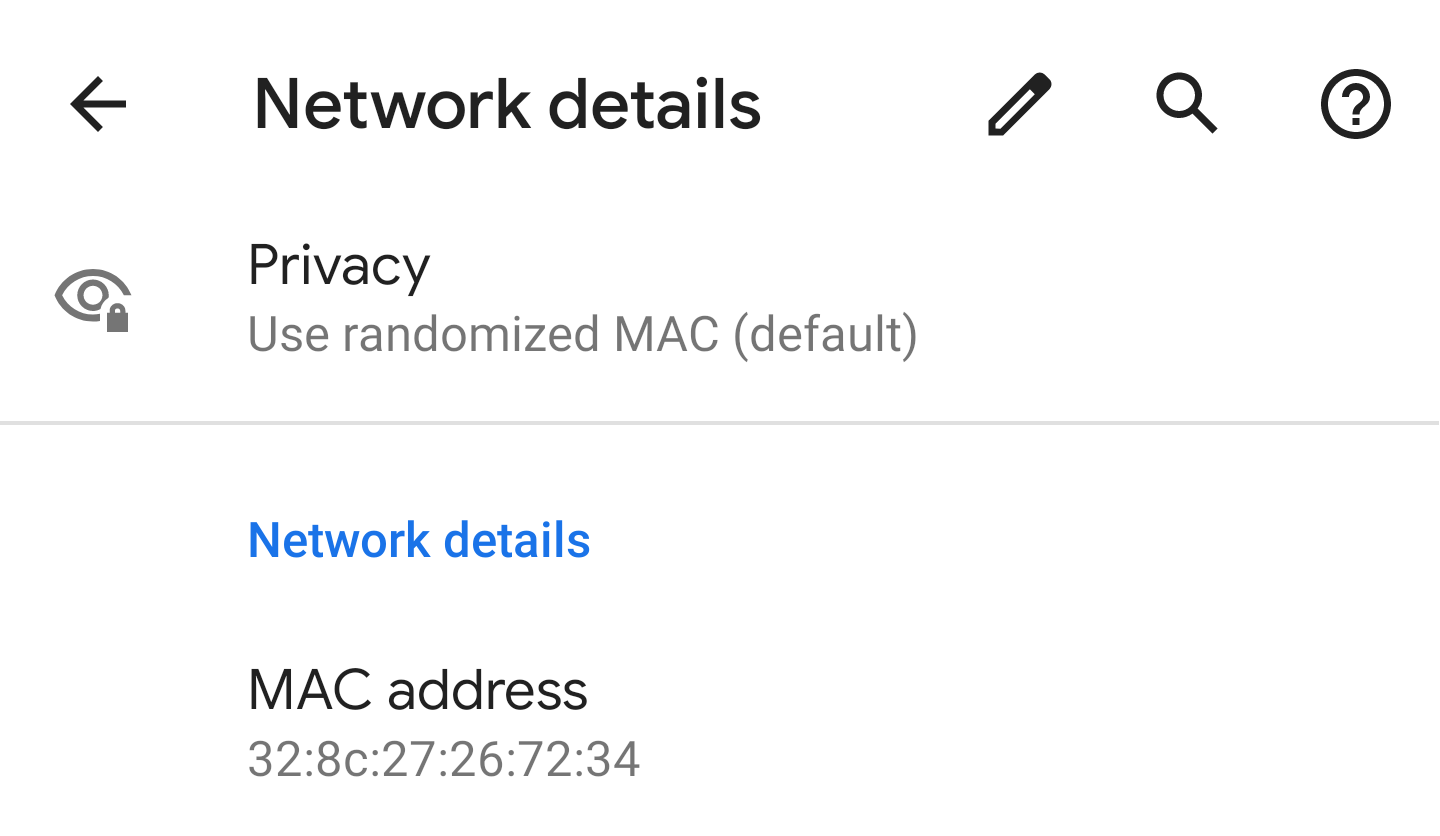

- #Command to find mac address of phone in kotlin Bluetooth#
- #Command to find mac address of phone in kotlin zip#
- #Command to find mac address of phone in kotlin download#
#Command to find mac address of phone in kotlin zip#
Once downloaded, extract the zip to a folder.
#Command to find mac address of phone in kotlin download#
We recommend using the Torrent approach to download as it is significantly faster. Download the image file that will be programmed to the SD Card:Īs of the writing of this guide, the latest release is Raspbian Buster which was released in July 2019. Raspberry Pi runs a custom distribution of Linux.
#Command to find mac address of phone in kotlin Bluetooth#
If you already have a RPi configured, you can skip to Installing BlueZ Bluetooth Stack on the Raspberry Pi Raspberry Pi 4B (instructions can work for older devices).We'll be using a Raspberry Pi 4 which was recently released, but the information will be useful for other Pi boards.

We recommend using a Raspberry Pi 4, but older devices, especially the Raspberry Pi 3B+, will work Now let's start using the Raspberry Pi to control some devices. With all this said, it can make a good solution for indoor control of devices. If you're looking to control devices over any reasonable distances beyond a room or two, adding another radio or finding another solution would be best. Ultimately, the Bluetooth LE range of the Raspberry Pi devices is decent but limited, and it won't approach what you can get with an external antenna and a more sophisticated system. Any modification to the board would invalidate the FCC and related certifications. The certification for the Raspberry Pi doesn't declare an external antenna.There's no physical connector, meaning that an antenna or connector would need to be soldered.The antenna can't be changed on the raspberry Pi for a few reasons: Both of these have some impact on performance, though the RPI foundation does not provide detailed antenna radiation information. This antenna is surrounded somewhat by the GPIO connector pin connector. The biggest issue the Raspberry Pi has a relatively small antenna. Given that the system is a single chip solution, there is also support for Coexistence to reduce interference

Some of devices have support for 5GHz Wi-Fi band reduces interference on the 2.4GHz band used by BLE. The good news are that the Pi has pretty good chipsets from an RF performance and feature perspective, leveraging Broadcom and now Cypress. Over the last few years, we've seen companies use the Raspberry Pi as a gateway system because of it's performance and cost. After all, no guide from us would be complete without it. This feature is normally not found on combo Wi-Fi + Bluetooth chipsets.īefore we get into running the Raspberry Pi, we wanted to discuss a bit about performance. The main one that is missing is the Long Range support, so if you were thinking of leveraging the Coded PHY for extra long range, you won't be able to. If you're thinking of deploying BlueZ, you should most definitively test it extensively in a real world application.īluetooth 5.0 support on the Raspberry Pi is limited to the mandatory features. This stack has been used for many years, and although it supports both Bluetooth Classic and BLE, its support for BLE is more recent and there are some limitations and sometimes bugs because it does not get as much testing. raspberry Pi 3A used BCM43438 chipset from Broadcom, while it moved to a CYW43455 chipset with support for 802.11ac and dual band (2.4GHz and 5GHz).Įach version of the Raspberry Pi uses Linux and so leverages the OpenSource BlueZ Bluetooth stack. The exact chipset supported varies depending on the board being used. Raspberry Pi supports Bluetooth Low Energy because they integrate a combo Wi-Fi + Bluetooth chipset.


 0 kommentar(er)
0 kommentar(er)
